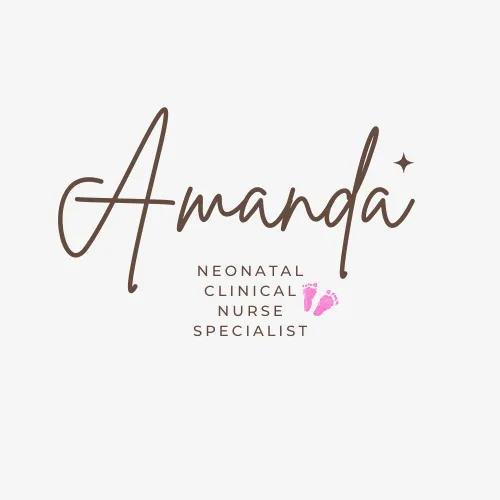
Welcome to Amanda's NICU Education




Hi! My name is Amanda. I'm a NICU nurse, Clinical Nurse Specialist, NICU Educator... basically your NICU BFF. If you want to talk NICU, I'm here for you! I love everything about NICU nursing and I'm eager to learn and share my knowledge with all my NICU friends.
I have been a NICU nurse since 2009 I am currently a Clinical Nurse Specialist in a Level IV NICU in Los Angeles.
I am passionate about educating the next generation of NICU nurses. I share my knowledge through platforms such as Instagram and Facebook and am excited to have you here on my website!
Click on the button below to sign up for my newsletter filled with NICU education and tips for all experience levels.

Not very many people love taking tests but as a self-acclaimed "forever student" who has taken (and passed) five different certification exams I am no longer afraid of tests! "Way to brag", you might be thinking but I want to help YOU pass your certification exam too!
Introducing Amanda's RNC-NIC Success digital course - your ultimate study companion!
Gain unlimited, on-demand access for life, ensuring you're primed to ace your certification exam.
I'm here to help you succeed and I can't wait for you to share with me that you PASSED the RNC-NIC EXAM!!!









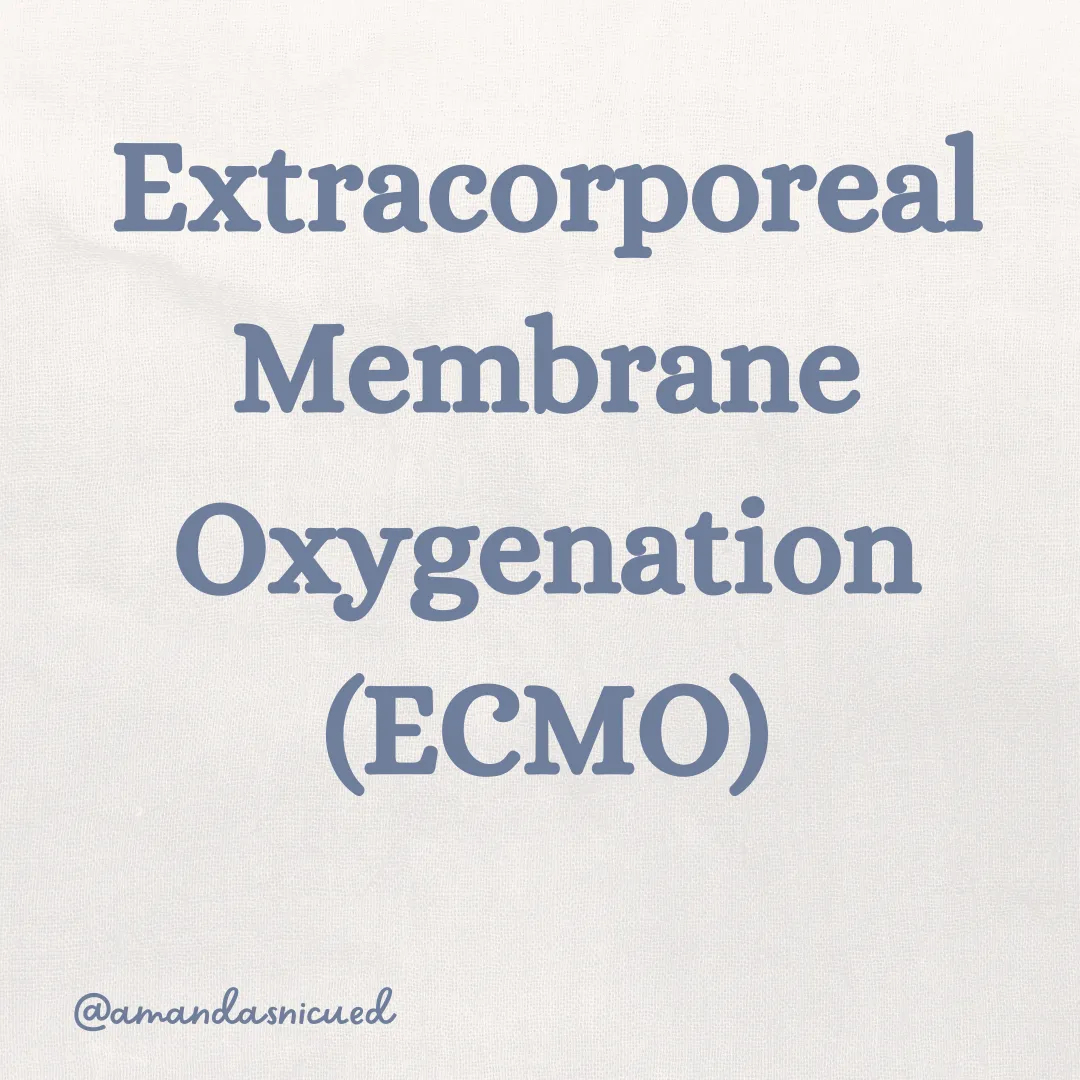
ECMO

What is ECMO?
Extracorporeal Membrane Oxygenation (ECMO) is a method of providing cardiopulmonary bypass to critically ill patients. Blood is oxygenated through the ECMO circuit then returned to either the venous or arterial system. ECMO can be beneficial for critically ill infants with meconium aspiration syndrome (MAS), persistent pulmonary hypertension (PPHN), congenital diaphragmatic hernia, and other severe reversible conditions.
Types of ECMO
Veno-venous (VV): VV ECMO is primarily used for respiratory failure as it supports oxygenation and ventilation using a cannula that removes blood deoxygenated blood, oxygenates and removes CO2 through the ECMO circuit, then returns oxygenated blood to the right atrium. VV ECMO is utilized for babies with respiratory failure.
Veno-Arterial (VA): VA ECMO supports that cardiac and respiratory system. In VA ECMO the blood is drained from the jugular vein and returned to the arterial system via the carotid artery. VA ECMO is used in patients with cardiac failure, post CHD repair, cardiac arrest, or as a bridge toward transplantation.
Anatomy of the ECMO Circuit
The ECMO Circuit has several key components:
Cannula: Inserted into the vein and/or artery to remove and return blood
Pump: An artificial heart that pumps blood through the circuit. It is crucial for maintaining adequate flow
Oxygenator: An artificial lung that removes CO2 from the blood and adds oxygen
Bloodline: These are the tubes that carry the blood between the patient and the ECMO machine

Considerations to determine if a baby needs ECMO
Therapies such as high frequency ventilation, inhaled nitric oxide, and exogenous surfactant administration has lessened the need for ECMO in many patients. However, ECMO is considered the standard of care for patients with reversible respiratory failure or cardiac insufficiency in which conventional medical treatments have failed.
One method of monitoring a patient's severity of respiratory failure is by measuring the oxygen index (OI). The OI is measured by multiplying the Mean Airway Pressure (MAP) by the fiO2 (times 100), then dividing that by PaO2. The OI helps to serve as a marker for initiating therapies such as inhaled nitric oxide, and evaluating the response after therapies such as surfactant. Infants with an OI >25 should be considered for transfer to an ECMO center. Newborns who have respiratory failure with an OI that remains greater than 30-40 despite maximum medical management should be considered for ECMO.
Some contraindications to ECMO include prematurity, weight less than 2kg, coagulopathy, irreversible disease, and intraventricular hemorrhage. With this in mind, some evaluations (e.g. echocardiogram, head ultrasound, blood typing) will need to be performed prior to cannulation for ECMO.
When it is determined a patient needs ECMO, multiple teams must mobilize in order to provide this specialized care to the neonate. A full surgical team (surgeon, surgical assistant, anesthesiologist, circulator, etc.) is required for cannulation as well as the medical team (NICU/PICU Attending, RN, RT), and the ECMO circuit specialists. It is important to have a process in place to identify patients who require ECMO as early as possible to coordinate mobilization of the teams or transport to a hospital that provides ECMO.
Nursing considerations when caring for babies on ECMO
Preparation Prior to Cannulation
Ensure all necessary drains, such as urinary catheters and nasogastric tubes, are in place before cannulation. Heparin is administered during cannulation to prevent clotting, which increases the risk of bleeding when inserting lines or other devices.
Monitoring Requirements
ECMO patients require meticulous monitoring of vital signs, hemodynamics, and laboratory values, including blood gases, coagulation studies, and electrolytes. Here are some specific areas to monitor:
Neurologic Monitoring: Monitor for signs of neurological changes, including alterations in consciousness, pupil size and reactivity, and seizure activity. Utilize tools such as NIRS to closely monitor oxygen consumption and tissue perfusion. Serial head ultrasounds are done to monitor for bleeding.
Pain Management: Use a validated tool to closely monitor for signs of pain. Implement both nonpharmacologic and pharmacologic measures to manage pain, and include the family in providing gentle containing touch. Does your institution allow families to hold their babies while on ECMO? I'd love to hear about it if you do!
Thermoregulation: Support the newborn in maintaining proper body temperature to reduce oxygen consumption and stress.
Pressure Injury Prevention: Newborns on ECMO are at risk for pressure injuries. Perform frequent assessments to identify signs of injury and offload pressure from medical devices. Use pressure-reducing mattresses and barriers to protect the skin.
Cardiac Output Support: For babies on VV ECMO, their cardiac output is self-reliant, and inotropic support may be necessary. However, some infants may quickly wean off inotropic support after starting VV ECMO due to improved oxygenation and ventilation. Those on VA ECMO have their hemodynamics controlled by the VA pump. Closely monitor overall perfusion, ABGs, urine output, lactate levels, NIRS, and arterial waveforms.
Ventilator Settings: Coordinate with respiratory therapists to adjust ventilator settings as needed to optimize lung function while minimizing lung injury. We want to avoid atelectasis while allowing the lung to recover. Be cautious when suctioning the ETT to prevent bleeding.
Nutrition Support: ECMO patients have increased metabolic demands. Manage and monitor trophic enteral and parenteral nutrition as ordered to support growth and healing.
Infection Prevention: Adhere to strict aseptic technique and follow institutional bundles to prevent hospital acquired infections (e.g. CLABSI, VAP, etc.)
Pharmacology: Patients on ECMO have a higher volume of distribution and require dose adjustments to compensate for the larger volume. Additionally, patients on ECMO have reduced clearance due to hepatic and renal dysfunction. Collaborate with Pediatric Pharmacists on drug dosing
Family Support
Communication: Provide clear and compassionate communication with the family about the patient's condition, progress, and any changes in treatment plans.
Involvement: Encourage and support family involvement in the care of their baby, as appropriate, to promote bonding and reduce parental stress.
Laboratory Monitoring
Draw and monitor labs as ordered. Anticoagulation is closely monitored using the Activated Clotting Time (ACT) or unfractionated heparin assay (antifactor Xa, anti Xa). Additionally, monitor PTT, Antithrombin (AT3), Platelets, Fibrinogen, and Thromboelastrography (TEG). Replace blood products as needed. Additionally, electrolytes are closely monitored to avoid major irregularities. Glucose is also monitored to maintain euglycemia. Insulin may be required.
Intake and Output
Closely monitor the volumes of intake and output, avoiding fluid overload. Some babies on ECMO may also require continuous renal replacement therapy (CRRT). Infants on ECMO often become very edematous due to increased permeability and reduced lymphatic drainage. Diuretics may be used to promote diuresis and improve fluid balance. Severe fluid overload (>20% increase from birth weight) is associated with increased mortality, time on ECMO, and length of mechanical ventilation.
Outcomes
Rates of survival vary based on the indication for ECMO, with Congenital Diaphragmatic Hernia survival rates being about 50% and PPHN being about 73% according to recent ELSO guidelines. Overall, survival to discharge is about 73% for newborn patients with respiratory disease.
References
Hull, N. C., Schooler, G. R., Binkovitz, L. A., Williamson, E. E., Araoz, P. A., Yu, L., & Young, P. M. (2018). Chest computed tomography angiography in children on extracorporeal membrane oxygenation (ECMO). Pediatric radiology, 48(7), 1021–1030. https://doi.org/10.1007/s00247-017-4034-3
Totapally, A., Bridges, B. C., Selewski, D. T., & Zivick, E. E. (2023). Managing the kidney - The role of continuous renal replacement therapy in neonatal and pediatric ECMO. Seminars in pediatric surgery, 32(4), 151332. https://doi.org/10.1016/j.sempedsurg.2023.151332
Wild, K. T., Rintoul, N., Kattan, J., & Gray, B. (2020). Extracorporeal Life Support Organization (ELSO): Guidelines for Neonatal Respiratory Failure. ASAIO journal (American Society for Artificial Internal Organs : 1992), 66(5), 463–470. https://doi.org/10.1097/MAT.0000000000001153
Muniraman HK, Song AY, Ramanathan R, et al. Evaluation of Oxygen Saturation Index Compared With Oxygenation Index in Neonates With Hypoxemic Respiratory Failure. JAMA Netw Open. 2019;2(3):e191179. doi:10.1001/jamanetworkopen.2019.1179
Wild, K. Taylor†; Rintoul, Natalie†; Kattan, Javier‡; Gray, Brian*. Extracorporeal Life Support Organization (ELSO): Guidelines for Neonatal Respiratory Failure. ASAIO Journal 66(5):p 463-470, May 2020. | DOI: 10.1097/MAT.0000000000001153
Gomella, T., Eyal, F., Bany-Mohammed, F. (2020). Extracorporeal Life Support in the Neonate in Gomella’s Neonatology. McGraw-Hill
Kabir Abubakar, M., & Torres, M.B. (2020). Extracorporeal Membrane Oxygenation Cannulation and Decannulation in McDonalds Atlas of Neonatal Procedures. Wolters Kluwer. Philadelphia, PA

December 2023 Certification Review Webinar
NICU Certification Review


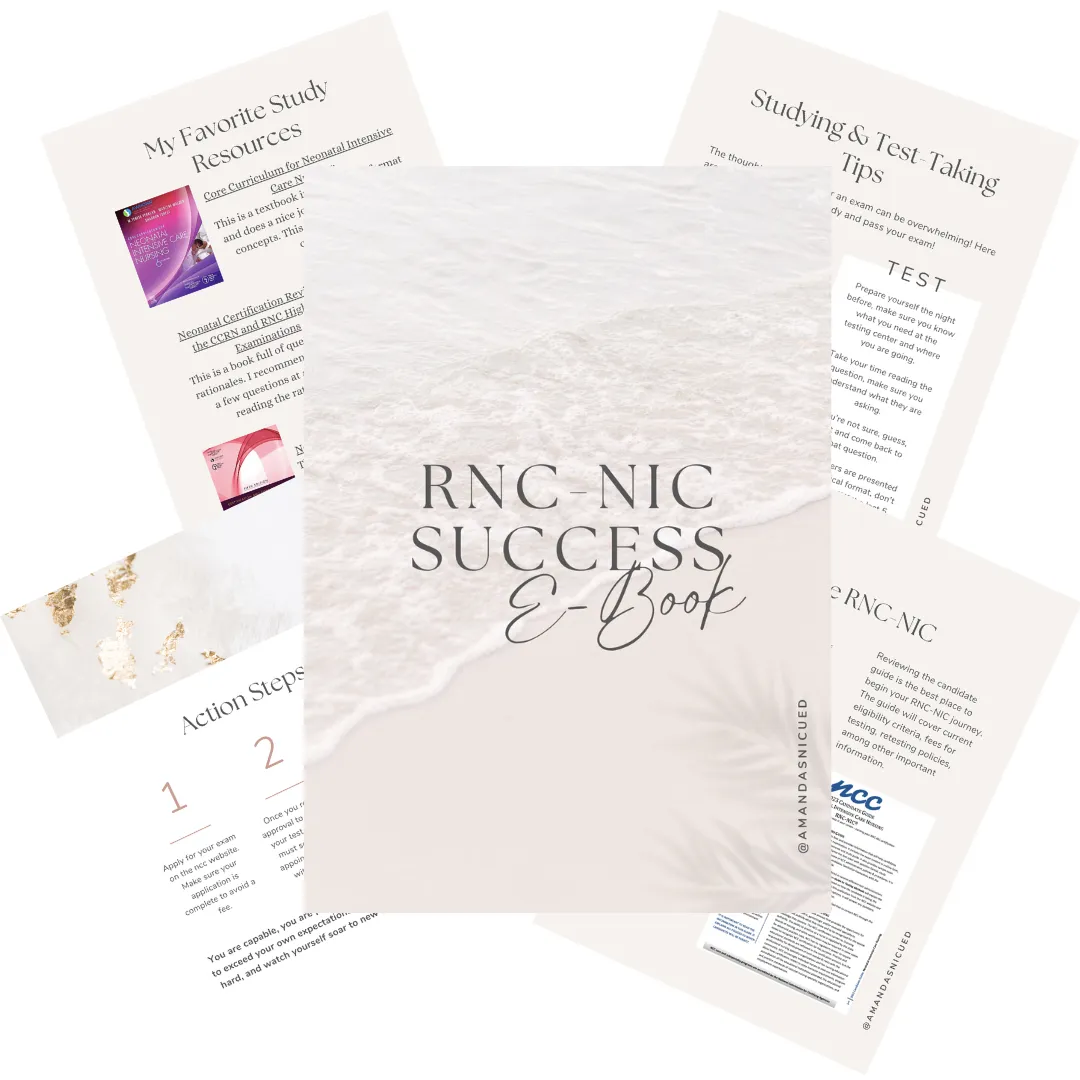
Ready to kickstart your journey to becoming a certified NICU nurse?
Look no further!
Grab my FREE E-Book packed with essential study and test-taking strategies for the RNC-NIC.
In the E-Book I give you the resources you need including the link to access the candidate guide, several types of books to study from, some of my favorite strategies, an outline of the content you should review, and a blank calendar for you to make your study plan!
Frequently Asked Questions About the RNC-NIC exam

What is the RNC-NIC?
The RNC-NIC is a competency-based exam that tests the specialty knowledge of nurses in the United States & Canada who care for critically ill newborns and their families.
The RNC-NICU is a nationally recognized certification that recognizes the registered nurse for their specialty knowledge and skill.
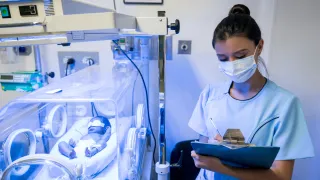
Who can take the RNC-NIC exam?
Nurses can take this exam after a minimum of two years experience in the NICU caring for critically ill newborns and their families.

Which books should I use?
I'm glad you asked! There are many excellent books to help you prepare for the RNC-NIC, I gathered ande describe each of them for you in my FREE e-book.
Is there a course to help me study?
Yes! Many hospitals host their own certification course and there are a few online courses. See my RNC-NIC test taking tips E Book for more information
What happens if I don't pass the exam?
If you don't pass the exam on your first try you can try again after 90 days. You will have to reapply after 90 days and pay a retest fee. There is no limit to the number of times you can take the exam (however a candidate can only sit for the exam twice per year).
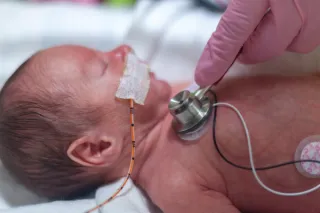
Can I make more money if I take the RNC-NIC exam and get certified?
Yes! Many hospitals provide a raise or a bonus for nurses with specialty certifications. Hospitals also typically hire at a higher base salary when nurses have a certification.

Find me @amandasnicued on these channels or Email me
hey nurses don't miss out
© Copyright 2024. AmandasNICUEd. All rights reserved. | Terms & Conditions | Privacy Policy Contact: [email protected]
